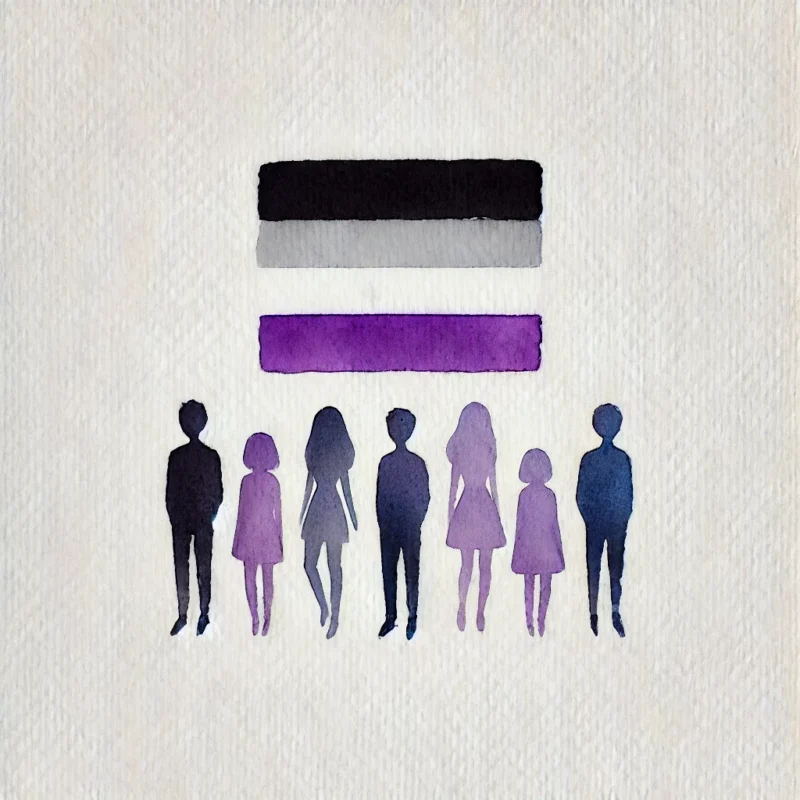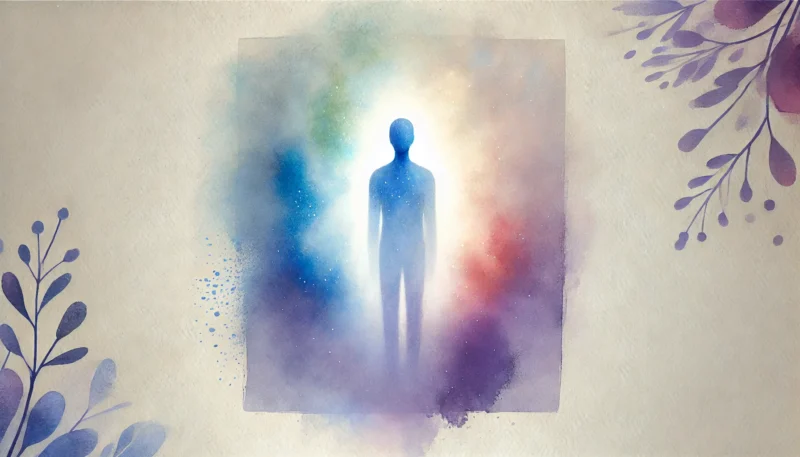Asexuality, a term that captures the complex nature of human sexuality, challenges conventional understandings of sexual attraction and desire. Simply put, asexuality is the lack of sexual attraction towards others, a concept that broadens the spectrum of sexual orientation. In a society where sexual attraction is often seen as a fundamental experience, the acknowledgment and study of asexuality reveal significant insights into the diverse nature of human sexual expression. While some may confuse or conflate asexuality with celibacy or abstinence, the reality is far more nuanced, rooted in a lack of attraction, not necessarily a lack of desire. This distinction underscores the importance of comprehensively exploring the asexual spectrum to foster greater awareness and understanding.
The article will delve into the nuances of asexuality, discussing its various definitions and variants such as gray asexuality and the broader ace spectrum. A comparison between sexual attraction and sexual desire will provide clarity on how these concepts intersect with, yet differ from, one another within the asexual community. Furthermore, it will explore the non-sexual motivations for sex among asexuals, addressing how relationships, emotional closeness, and other factors play a role. Common challenges and misunderstandings in society regarding asexuality, including a lack of visibility and misconceptions, will be highlighted. Finally, the conclusion will aim to synthesize these discussions, emphasizing the complexity and validity of asexuality as a sexual orientation, thereby contributing to the ongoing conversation on sexual diversity and asexual awareness.
Defining Asexuality and Its Variants
Asexuality encompasses a spectrum of sexual orientations that are either devoid of or exhibit limited sexual attraction towards others. The term “asexual spectrum” or “ace spectrum” refers to this broad range of identities, which includes asexual individuals who experience no sexual attraction whatsoever, as well as those who experience it under specific conditions or at a low intensity .
Asexuality
Asexuality is defined as a sexual orientation where an individual does not experience sexual attraction toward any person. Despite this, asexual individuals may still engage in sexual activities for various reasons and can experience other forms of attraction, such as romantic, aesthetic, or sensual attractions. It is crucial to note that asexuality is not a choice, behavior, or medical condition, but a valid sexual orientation .
Gray-A, Demi-Sexual, and Other Identifications
Gray-asexual, often abbreviated as gray-A or graysexual, describes those who fall between asexual and allosexual orientations. Individuals identifying as gray-asexual might experience sexual attraction infrequently, at low intensity, or under specific circumstances, making it a fluid category within the ace spectrum .
Demisexuality is another significant orientation within the asexual spectrum, characterized by experiencing sexual attraction only after forming a deep emotional connection with someone. This connection can be romantic, platonic, or another form of bond, varying greatly among individuals. Demisexuals might not identify strictly as asexual, as their experience of sexual attraction is conditional and tied to emotional closeness .
These variants highlight the diversity within the asexual community and underscore the importance of recognizing and respecting each unique experience of sexual orientation.

Sexual Attraction vs. Sexual Desire
Academic Definitions
Sexual attraction and sexual desire, while often conflated, represent distinct concepts within the realm of human sexuality. Sexual attraction refers to the attraction that makes individuals desire sexual contact or show sexual interest in another person . This form of attraction is typically linked to the physical or aesthetic qualities of another person and can lead to fantasies about sexual intimacy. On the other hand, sexual desire is the inclination to engage in sexual activity, irrespective of the presence of sexual attraction . It involves a more active intention to pursue sexual experiences and can exist independently of finding someone sexually attractive.
Personal Experiences and Testimonies
Individuals within the asexual community often articulate a clear distinction between lack of sexual attraction and the presence or absence of sexual desire. Some asexuals report no sexual attraction but possess a sexual desire, which may manifest as a willingness to engage in sexual activities for various reasons, such as emotional intimacy or partner satisfaction . Conversely, there are asexuals who experience neither sexual attraction nor desire, aligning more closely with what some describe as the ‘absolutely dead’ scenario in metaphorical terms . This diversity within the asexual community highlights the need for nuanced understanding and language that separates these experiences.
For instance, one individual describes feeling fundamentally different from other asexuals who might have desires for sexual interactions, indicating a spectrum within the asexual identity itself . This personal testimony underscores the complexity of experiences and the non-binary nature of sexual attraction and desire. It suggests that while some asexuals might engage in sexual activities out of interest or desire, others might participate solely for the sake of their partners, without any personal sexual attraction or desire .
These narratives emphasize the importance of recognizing and respecting each person’s unique experience and orientation, which can vary significantly even within the same labeled category. Such distinctions are crucial for fostering understanding and inclusivity within both the asexual community and society at large.
Non-Sexual Motivations for Sex Among Asexuals
Companionship and Pressure from Partners
Asexual individuals may engage in sexual activities with their partners for reasons unrelated to sexual attraction. For many, the motivation lies in the desire for companionship and the emotional closeness that physical intimacy can foster. One asexual individual expressed engaging in sexual activities to feel close to their partner and to make their partner feel appreciated, despite not experiencing sexual attraction . This sentiment is echoed by others who participate in sexual acts not out of personal desire but to satisfy their partners’ needs and maintain the relationship .
The pressure from partners can also play a significant role. Some asexual individuals report feeling compelled to engage in sexual activities due to expectations set by their partners or societal norms. This can lead to complex dynamics within relationships where one partner is sexual and the other is not. The desire to please a partner or fit into societal expectations can sometimes overshadow personal discomfort or disinterest in sex .
Exploration and Curiosity
Curiosity about sexual experiences can also motivate asexual individuals to engage in sexual activities. Despite a general lack of sexual attraction, the intrigue of experiencing physical intimacy and understanding its appeal to others can lead some asexuals to explore sexual relationships. This exploration is often driven by a desire to understand their own bodies and emotional responses to sexual activities .
Additionally, some asexual individuals may engage in sex as part of a broader exploration of their identity, particularly those who identify as gray-asexual or demisexual, who might experience sexual attraction under specific conditions or intensities . The process of exploring these feelings can be an important aspect of personal growth and understanding within the spectrum of asexuality.
In conclusion, the motivations for asexual individuals to engage in sexual activities are varied and complex, encompassing a range of emotional, relational, and exploratory reasons. These motivations highlight the diversity within the asexual community and underscore the importance of recognizing and respecting individual experiences and choices.

Challenges and Misunderstandings in Society
Identity Validation
A significant challenge faced by the asexual community is the validation of their identity. Misconceptions such as asexuality being a phase or a condition that can be “cured” persistently invalidate the experiences of asexual individuals . For instance, some believe that asexuals simply haven’t met “the right person” or that their orientation is a result of past traumas, which is a harmful assumption that overlooks the legitimacy of asexuality as a natural orientation . These views contribute to the societal pressure asexual people face, often compelling them to conform to normative sexual expectations which do not align with their true identity.
Common Myths About Asexuality
The asexual community is frequently subjected to a range of myths and misunderstandings that can lead to social exclusion and personal distress. Common myths include the notion that all asexuals are celibate or that asexuality equates to a lack of sexual organs, both of which are incorrect and misleading . Another widespread belief is that asexual individuals do not experience or express love, confusing a lack of sexual attraction with an absence of emotional depth . Furthermore, the stereotype that asexuality is synonymous with social awkwardness or physical unattractiveness marginalizes and stigmatizes asexuals, obscuring the reality that they are as diverse as any other community .
These challenges underscore the importance of education and awareness to combat the stereotypes and misconceptions about asexuality. By addressing these myths, society can move towards a more inclusive understanding that respects and acknowledges the broad spectrum of human sexual orientations.
Conclusion
Throughout this exploration of asexuality, the intricacies of desires without sexual attraction have been laid bare, illuminating a spectrum that defies simplistic categorization. From the foundational distinctions between sexual attraction and desire, to the diverse expressions within the asexual community, including gray asexuality and demisexuality, this discourse underscores the vital importance of nuanced understanding and recognition of asexuality. Such insights not only enrich our comprehension of human sexuality but also affirm the legitimacy and complexity of asexual identities, challenging stereotypes and misconceptions that persist in society.
Ultimately, the conversation about asexuality is one about visibility, validation, and the broader implications of acknowledging a wide spectrum of sexual orientations. By delving into the motivations behind sexual activities among asexuals and confronting the societal challenges they face, the article contributes to a more inclusive dialogue on sexuality. It signals a move towards greater awareness, encouraging further research and action that respects and celebrates the rich diversity of human experiences. This reflection on asexuality not only highlights its validity as a sexual orientation but also serves as a call to deepen our collective understanding and acceptance of all sexual identities.
FAQs
What does it mean to be asexual?
Asexuality refers to individuals who generally experience little to no sexual attraction towards others, a characteristic that may be evident from adolescence and persist for many years. This differs from having a low sex drive, where a person might have previously felt high sexual desire but currently does not.
How is someone who rarely or never feels sexual attraction described?
The term “asexual” is used to describe a person who does not feel sexual attraction to any gender. It is important to note that asexuality is a sexual orientation and differs from celibacy, which is the personal choice to abstain from sexual activities, irrespective of sexual attraction.
What is the meaning of cupiosexual?
Cupiosexual, previously known as Kalossexual, is a term within the asexual spectrum. It describes individuals who do not experience sexual attraction but still have a desire for a sexual relationship.
Can you explain what autosexuality is?
Autosexuality refers to individuals who find themselves more sexually attracted to themselves than to others. While autosexuals may prefer masturbation over sexual interactions with partners, it does not necessarily exclude the possibility of them having sexual relationships with others.











